Having a personal motto
April 20, 2018
Do you have a personl “motto”?
The motto is the word that you always keep in mind, and also the word that encourage yourself. In other words, it is a word that expresses the policy for living.
Having a personal motto is an easy and cool way to express yourself. Japanese people often say a personal motto when introducing themselves in public. So what kind of personal motto are famous among Japanese? Many people take from four-character idioms, proverbs, words of celebrities and literature of old age, but anything can be used as long as you reprove yourself or to rule them.
Well then let me introduce the popular motto among Japanese.
1, “Once-in-a-lifetime opportunity.”
The meaning is to think once in a lifetime, to cherish the opportunity to meet people.For those who want to cherish their relationship carefully, they are likely to be the perfect motto.

2, “Persistence pays off.”, “Constant dripping wears away a stone.”
It is a very famous proverb. It is hard to continue each and every thing, but if you continue, you will surely be able to gain trust and be powerful. If you have done something hard, such as practicing sports or instrument playing, I hope you can talk about that episode.
3, “Live as if you were to die tomorrow. Learn as if you were to live forever.”
The father of Indian independence, Gandhi’s words. Even though you graduate from school and start work, studying continues on a daily basis. It is a perfect word for people with ambition. It might be good to put your words in great words of your country.

4, “Fortune is unpredictable and changeable.”
It is from the old story of China. It means that what you think is happy is unfortunate and what you think is unhappy can make you happy. Whatever happens, you better not be quickly deciding and you should be cautious.
How was it? If you do not have a personal motto yet, you may ask your friends, colleagues, seniors about their favorite motto. If you try living while thinking about what is good for you, you may find good words.
What are the New Three Grand Cuisines?
April 16, 2018
Do you know that the Three Grand Cuisines are French, Chinese, Turkish?
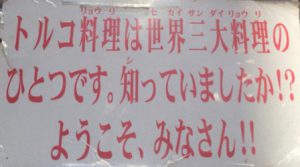
There are various theories why these were chosen and main reasons are as follows.
(1) The royal cuisines of these countries were developing.
(2) The land of these countries is wide and has abundant ingredients.
(3) These countries were thriving in trade, making it easy to get food from other countries.
(4) These countries are the center of culture In each region and have great influence on other countries.
(5) Interest in meals is high
I understood well about these reasons. However, there is obvious discomfort in me. Yes, that is caused by Turkish food.
Turkish food is certainly delicious. The other day a Norwegian friend taught me a delicious Turkish restaurant and so I went there. It was very delicious. However, the question remains as to whether Turkish cuisine is among the top three in the world. (← Sorry! Turkish people m (__) m)
So, I would like to ask all of you, what food do you choose for the New World’s three great dishes?
Unlike in the past, it is not necessary to think about the above five factors now and even ordinary people like me can eat delicious dishes and can get food materials from all over the world easily.
When I asked my friends, There was a person who pinpointed “It’s Northeast Chinese food!”
A friend who like curry has chosen India. A friend who likes beer chose German cuisine. It was because there are many dishes that match beer. Some people answered “curry, ramen, hamburgers!” He did not choose countries, lol The reason he answered so was “Food is not belonging to a specific country now.” Certainly, Indian curry and Japanese curry are different things, so I think it make sense. Even in Chinese food, Cantonese cuisine and Szechuan cuisine have different taste.
Then, it becomes difficult to define ” New Three Grand Cuisines ?so I changed the question to ‘Please list the three countries where the food is delicious’.
Below are the countries my friends chose.
France, Italy, Spain, Belgium, Germany, Mexico, India, China / Taiwan, Korea, Thailand,
Vietnam and Japan.
I chose China / Taiwan, Italy and Japan.
What do you think??
PS
Besides the world’s three greatest cuisines(世界三大料理), there are expressions of [the world’s three greatest ___(世界三大〇〇)] such as the world’s three greatest night views(世界三大夜景), the world’s three biggest disappointments(世界三大がっかり).
https://travel.rakuten.co.jp/mytrip/amazing/world-big3/
The world’s three largest ___ can be good conversational topics, so please remember (^ ^) /
Battle of Japan’s gourmet sites for survival
April 4, 2018
In preparation for a corporate event or reception, usually we need to find a suitable restaurant. Where should you go for tasty food or the ideal restaurant? Or just use Yelp or TripAdvisor to search local restaurants?

If you need to find a restaurant in Japan, you are recommended to use Japanese gourmet sites that provide the latest information on various types of restaurants. In this article, we will introduce five well-known Japanese gourmet sites, and then explain the latest trends and business models of these websites for your reference.
GURUNAVI
GURUNAVI is a long-established gourmet site that started in the 1990’s. It contains the latest information which are mostly provided by the restaurants, not much real reviews from users.

HOT PEPPER
HOT PEPPER provides many coupons to attract many users who are looking for good food at preferential price. In contrast, HOT PEPPER is more suitable for young people to prepare for banquets or parties, more than business purposes.

TABELOG
The strength of TABELOG is their rankings and real reviews from users. Their new business model probably broke the stronghold of GURUNAVI. According to an analysis of the total visits of websites, TABELOG has a share of 50% or more.
(http://hiryu.hatenablog.com/entry/2016/04/14/193236).
However, it seems that TABELOG’s popularity has dropped recently. Many users are dissatisfied with their services because many advertisements have been appearing in the website.
If you become a paid user, you can see rankings without any advertisements.

Retty
Compared with the decreasing popularity of TABELOG, Retty gets success in very less time and become popular. TABELOG shows reviews in an anonymous way, while Retty launched a real-name system. This difference contributes to its high popularity and high praise for its credibility of reviews. Not only users, Retty also attracts the attention of many investors. From 2012 to 2016, it has raised a total of 2.5-billion-yen investment fund.
Although Retty achieves significant growth, its future development crucially
depends on what kind of monetization strategy will be adopted.

HITOSARA
Although HITOSORA is less well-known, it gains huge support from food lovers with its unique concept of “searching restaurant by chef”. Retty shows reviews with the user’s real name, but those are almost general comments. However, you can search restaurants by gourmet experts or famous chefs via HITOSARA. For this reason, most restaurants shown in HITOSARA are high class restaurants, that suitable for business purposes.

Perhaps you have noticed that the popularity of gourmet sites is directly related to their business models.
First Generation (Gourmet Site 1.0)
The business model of gourmet sites like GURUNAVI and HOT PEPPER is a kind of commercial advertising. Information shown in the site are mostly provided and paid by the restaurants, and there is no real review that users wish to know.
Second Generation (Gourmet Site 2.0)
TABELOG is committed to collecting users’ voices. We classify it to be the second generation. In certain extent, its content is also a kind of commercial advertising, but it also collects fees from users. By the way, TABELOG is operated by a well-known company called “価格(Kakaku).com “, which is popular with price rankings of home appliances and reviews.
Third Generation (Gourmet Site 3.0)
Although Retty has not yet announced its pricing model (monetization strategy), as it uses a real-name system and cooperates with social networking platform, we classify it to be a new business model. HITOSARA is also classified into the third generation because of the same real-name system.
In the near future, we would like to focus on the development of the third generation of gourmet sites, or whether the birth of fourth generation will bring a new impact to the industry.
PS.
For your reference, the following is a brief summary of various foreign language versions of gourmet sites.
(as of April 4, 2018)
【GURUNAVI】 https://www.gnavi.co.jp/
Foreign Language Editions:
English, Chinese Simplified, Chinese Traditional, Korean, Thai, Indonesian, Malay
【HOT PEPPER】 https://www.hotpepper.jp/
Foreign Language Editions:
English, Chinese Simplified, Chinese Traditional, Korean
【TABELOG】 https://tabelog.com/
Foreign Language Editions:
English, Chinese Simplified, Chinese Traditional, Korean
【Retty】https://retty.me/
Foreign Language Editions:
N/A
【HITO SARA】? http://hitosara.com/
Another site: https://savorjapan.com/
Foreign Language Editions:
English, Chinese Simplified, Chinese Traditional, Korean
Do you know what kind of Japanese company is good for advancing your career?
The following are the two checkpoints:
(1) the company has developed international business
(2) the company has actively implemented the policy of employing foreign nationals
In contrast, it is suggested that you should avoid choosing “super localized companies” with the following conditions:
- business development in Japan only
- all employees of the company are Japanese
Below I will show you how to evaluate a company’s employment conditions in order to separate from super localized companies.
First of all, you have to check the company’s “domestic and overseas sales ratio” and “the proportion of foreign employees.” There are many relevant information and data for the public, you should be able to find both checkpoints easily. However, making judgement just according to this information is not enough. Because even if the company has a higher proportion of overseas sales, it may be commissioned by the overseas trading companies for the sales operations. With regard to the number of foreign workers, the company may include foreign employees who are living and working overseas, while there are no foreign nationals in Japan office.
So, I suggest you more checkpoints as follows:
(3) whether or not any foreign nationals are employed in the management layer
(4) whether or not any foreign nationals are employed in the HR team
If there are foreign nationals working in the management layer, it can be said that the company has a relatively high possibility of developing a global business, and has a higher number of English-speaking Japanese employees.
In addition, it is supposed that the HR team is usually the most localized department. If there are foreign nationals working in the HR team, it can be said that the company’s diversity is making good progress. Coupled with the perspective of foreign employees carrying out recruitment and training, it can be said that the company can provide foreign nationals a friendly working environment.

What do you sell?
March 28, 2018
Overseas travelers to Japan were asked what they would like to take home with them and try to sell as a business. Here are the interesting results.
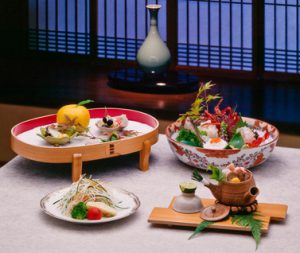
No. 1 Gourmet foods
Japanese food, ramen, and Japanese candy were popular answers.
Okonomiyaki, curry, tsukemono, sesame dressing, furikake and other such items were also popular.
Suprisingly, many travelers also liked Japanese bread.
Former Malaysian Prime Minister Mahathir liked Japanese bread so much he opened a Japanese style bakery in Kuala Lumpur.
No. 2 The Japanese character and way of thinking
Many travelers also said they would like to make a business out of the Japanese mentality, consideration toward others, hospitality and politeness.

No. 3 Traditional culture
Traditional items like kimonos, yukatas, bonsai trees, hand towels, and Japanese sake.
No. 4 Cosmetics
This was particularly a big hit among Asian visitors who also bought cosmetics as souvenirs.
During Chinese New Year, Matsumoto Kiyoshi drugstores are full of travelers from China.
No. 5 Pop culture
Otaku, anime, print club photo booths, and so on.
Stationery, the Japanese transportation system, and kotatsu (discussed in the last newsletter) also ranked high.
Japanese businesses have been aggressively developing transportation infrastructure projects similar to the shinkansen and Japanese subway system overseas, so maybe the Japanese transportation system will eventually be used in everyone’s country.

Technique of how to tell
March 16, 2018

Does anyone have trouble that you are not able to communicate well due to too straight expression?
Today, I will introduce a book to such people. It is [伝え方が9割] (つたえかたが9わり、Important things occupying 90% in the way to communicate).
I had the opportunity to listen to the lecture of Mr. Sasaki, the author of the book, and it was interesting, so I would like to introduce this book today.
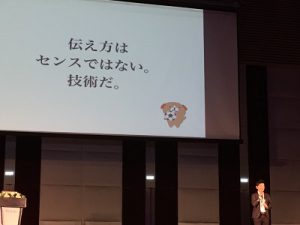
Mr. Sasaki is also a copywriter and CM planner, and as a result of pursuing a good way of communicating, he insists on the following two things.
- You can change scenes that are refused as “no” to “yes” if the way to tell is good!
- If that can be done, life will surely change!
For example, if there is a person who wants to date, how do you invite?
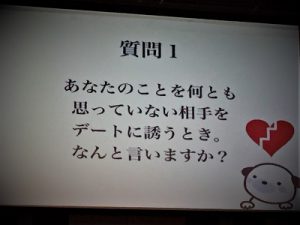
He says there are three steps to change “no” to “yes”.
【1】 Do not use words in your head as it is.
【2】 Imagine the inside of the opponent’s head.
【3】 Make a wish consistent with the merit of the opponent.
According to this steps, not to say straight like “I want to data with you”. imagine what the other person likes (eg : He / She likes Italian food), “There is a restaurant that offers amazingly delicious pasta. Why don’t we go together?” Both have the same goal of inviting to “date”, but how to tell is quite different, right?
He asserts, “How to tell is not sense, it’s technique!”
It is not easy to learn the sense, but anyone should be able to master the technique if they study. If you are interested, why not try reading it?

For beginner level to intermediate level people, we also recommend the manga version.

I’d like to introduce you to funny non-Japanese celebrities living and working in Japan.

【Atsugiri Jason】
Jason became famous for his phrase “Why Japanese People!” to lament the difficulty of the Japanese language.
He wanted to be a comedian in Japan, but they don’t give out visas for that, so he came to Japan and joined an IT company that was expanding in Japan. Later, he attended an entertainer training school, and has continued both jobs until the present time.
【Pakkun】
This comedian works as a team with a Japanese comedian. He not only appears on comedy shows, he also does other work as the moderator of an English education program and a commentator. He is actually a prodigy and graduate of Harvard.
http://www.youtube.com/watch?v=VrAKjEMrX3I
【Chad Mullane】
Chad dreamed of becoming a comedian. When he came to Japan to study abroad he felt Japanese comedy is the best in the world. After graduating from high school, he entered entertainer training school. Now, in addition to working as a comedian, he also works as a translator, translating many Japanese comedy movies.
I have three reasons for telling you about these people.
First, they are all are very good at Japanese.
Second, just like Jason Atsugiri, you can come to Japan and work at a job for which a visa is relatively easy to get, and then find work in the kind of job you really want.
Third, Pak-kun and Chad get many offers to do work other than being comedians. In other words, it’s important to have a career plan once you arrive in Japan.
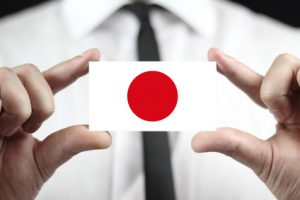
Social Studies Field Trips in Japan that Anyone Can Enjoy
February 27, 2018
During my grade school days in Japan, there was an extracurricular activity, called a “social studies field trip”, where I got to visit a local factory.
In recent years, more and more companies are actively accepting factory tours in order to create corporate fans, and field trips for adults are very popular. Such tours can easily be enjoyed, because they usually are free or cost only a few hundred yen.
I have primarily selected spots close to Tokyo.
Note that in some cases you must apply in advance, or there may be age restrictions or limits on the number of people in a group. Check with each site for details. Most websites are in Japanese only, but try to do the best you can.
Beer
Beer tastes significantly different depending on the country. Japanese beer is relatively easy to get used to for people from overseas.
Almost all beer factories allow beer tasting, so I recommend these tours for beer lovers.
KIRIN(Yokohama City, Kanagawa Prefecture)http://www.kirin.co.jp/entertainment/factory/yokohama/tour/
ASAHI(Minamiashigara City, Kanagawa Prefecture) https://www.asahibeer.co.jp/brewery/kanagawa/
SUNTORY(Fuchuu City, Tokyo)http://www.suntory.co.jp/factory/musashino/
SAPPORO(Funabashi City, Chiba Prefecture) http://www.sapporobeer.jp/brewery/chiba/

Japanese Sake
For Japanese sake, there is a huge warehouse called a sakagura (酒蔵) that you can tour.
SAWANOI (Oume City, Tokyo) http://www.sawanoi-sake.com/service/kengaku
KOYAMASHUZO (Kita Ward, Tokyo) http://www.koyamashuzo.co.jp/kura.html
ISHIKAWASHUZO(Fussa City, Tokyo) http://tamajiman.co.jp/tour/
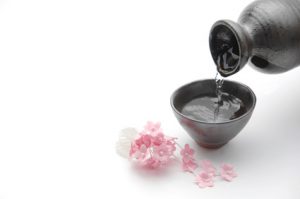
Soy Souce
You can also see how soy sauce, an integral part of Japanese cuisine, is made.
Yugeta Soy Sauce (Hidaka City, Saitama Prefecture) http://yugeta.com/oukoku/contents/kengaku.html
Kikkoman Soy Sauce (Noda City, Chiba Prefecture)http://www.kikkoman.co.jp/library/enjoys/factory/pdf/eigo.pdf(English site)
Automobiles and Motorcycles
You can see the history of Japanese cars and motorcycles, and famous cars from the past. These tours should be irresistible to car and motorcycle enthusiasts.
TOYOTA(Toyota City, Aichi Prefecture)http://www.toyota.co.jp/jp/about_toyota/facility/toyota_kaikan/index.html
NISSAN (Several plant tours exist) http://www.nissan-global.com/JP/PLANT/
HONDA (Several plant tours exist) http://www.honda.co.jp/kengaku/index.html
MAZDA (Hiroshima City, Hiroshima Prefecture)http://www.mazda.com/ja/about/museum/guide/
SUBARU (Oota City, Gunma Prefecture) https://www.subaru.co.jp/csr/factory-tour/
SUZUKI(Hamamatsu City, Shizuoka Prefecture)https://www.suzuki-rekishikan.jp/
KAWASAKI (Kobe City, Hyogo Prefecture)
https://www.kawasaki-motors.com/kaze/prev/kojo.html(Regular tours)(English site)
http://www.khi.co.jp/kawasakiworld/(Akashi City, Hyogo Prefecture)
(Kawasaki limits tours to motorcycle clubs only)
YAMAHA(Iwata City, Shizuoka Prefecture)http://global.yamaha-motor.com/jp/showroom/cp

Airplanes
The airplane hangars are incredibly impressive.
JAL (Oota Ward, Tokyo)http://www.jal.co.jp/kengaku/tour/
ANA (Oota Ward, Tokyo) http://www.ana.co.jp/cp/kengaku/index.html
Sweets
You can even buy gifts and souvenirs. There’s even a place that offers all-you-can-eat ice cream for free!
glico (Kitamoto City, Saitama Prefecture) https://www.glico.com/jp/enjoy/experience/glicopiaeast
calbee
(Hokkaido, Tochigi Prefecture, Hiroshima Prefecture)http://www.calbee.co.jp/factory/
AKAGI (Honjoo City, Saitama Prefecture) http://www.akagi.com/factory/index.html
*This is the manufacturer of the popular Garigari Kun ice cream in Japan.
chateraise (Hokuto City, Yamanashi Prefecture)https://www.chateraise.co.jp/enjoy/02factory.php
unagipai(Hamamatsu City, Shizuoka Prefecture) http://www.unagipai-factory.jp/tour.php
shiroikoibito(Sapporo City, Hokkaido)http://www.shiroikoibitopark.jp/english/
(English site)
royce (Chitose City, Hokkaido) http://www.royce.com/contents/english_rcw/(English site)
Miscellaneous
Cupnoodles-Museum
(Yokohama City, Kanagawa Prefecture) http://www.cupnoodles-museum.jp/english/index.html(English site)
You can make your own original cup ramen, including drawing a picture on the container and choosing the ingredients.
Yamato (Oota Ward, Tokyo)
http://www.yamato-hd.co.jp/hnd-chronogate/visitortour.html
You can tour the latest facilities of a Japanese distribution company that delivers luggage quickly and accurately.
Railway-Museum (Saitama City, Saitama Prefecture)
http://www.railway-museum.jp/en/index.html(English site)
This is a museum, so it is a little bit different from a social studies field trip, but it is a very popular spot for those who like trains.

Why isn’t LinkedIn used in Japan?
February 23, 2018
The column “Why isn’t LinkedIn used in Japan” is very popular.
・The company will think that you’re trying to change jobs if you register with LinkedIn. (In Japan, many people still assume lifetime employment.)
・Japanese people do not like to publicize their personal achievements and work experience. (Many people do not think in terms of their own achievements, but in terms of the achievements of their company or team.)
・In Japan, building personal relationships come first and this then leads to business opportunities. This is why people prefer Facebook.
・The following reason was also given: “Japanese people do not tend to draw a clear line between public and private matters. So they can talk about both their private lives and work on Facebook.” However, I think it’s more than just that.
The problem is the people who seek to employ workers.
Human resource departments, staffing agencies and corporate hiring managers also use LinkedIn, but except for large corporations, many hiring managers in Japan are also responsible for labor management, general affairs and administration, so they avoid direct recruiting because it’s a lot of extra work.
Not only that, there’s no real reason to put much effort into using LinkedIn, because even if hiring costs could be lowered by using it, companies don’t value it very much and it wouldn’t have much impact on salaries anyway.

If you do not prepare, you will lose money!
February 19, 2018
You may already know that “it is better for you to take lesson with preparation.”
But, there are not so many people who are always preparing well.
I think this is a very wasteful thing.
Because it is not a school nor a lecturer but a learner who lose by not preparing.
Not only time but also money.
Let’s think about what each lesson will be in the following three patterns.
(1) With complete preparation
(2) With little preparation
(3) Without preparing at all
(1) With complete preparation
In the lesson, the lecturer will explain only “what students have prepared but did not understand”. And the lecturer uses all the remaining time for exercises with high learning effect such as applied practice and role play. In addition, lecturers can explain things not written in textbooks, and can also customize exercises according to the environment and preferences of learners.
(2) With little preparation
In the lesson, the lecturer can explain what is written in the textbook and can use a little time for practicing high learning effect such as applied practice or role play.
(3) Without preparing at all
In the lesson, the lecturer must explain each vocabulary and grammar one by one and must use all the time for them. They cannot teach whole contents what they planned and they have to resume from the middle in the next lesson.
I will quantify and describe the above three patterns so that you can imagine. (*These figures are hypothetical, as it is aimed at simplifying the story, there is a possibility that it is not accurate.)
In each of the above cases, we assume the amount that you can learn in one lesson as follows.
(1) 150
(2) 80
(3) 40
And assuming that the total amount you have to learn in order to finish a course is 2000, the number of lessons required for each case is as follows. (In case a lesson progresses according to learners’ proficiency level)
(1)13.3 lessons
(2)25 lessons
(3)50 lessons
And assuming that one lesson is 10 US dollars, the necessary cost to complete the course is as follows.
(1) $ 133
(2) $ 250
(3) $ 500
In other words,
The person of (2) has to pay 1.875 times the tuition fee of (1).
The person of (3) has to pay twice the tuition fee of (2).
The person of (3) has to pay 3.75 times the tuition fee of (1).
Everyone wants to save both time and money, right? That’s why I recommend preparing well. Moreover, those who prepare well can do applied practice and customized exercises, which has the effect of making the lesson fun.
Which would you prefer, “Cost-effective good and fun lesson” or “Cost performance bad and boring lesson”?

Categories
Recent Posts
- I cannot keep up with meetings conducted in Japanese. Are there any good ways to study?
- Are there any good writing materials for business Japanese? (Three keys to developing business Japanese writing skills.)
- Are there any free materials available for studying business Japanese reading?
- Should I read newspapers for reading practice in business Japanese?
- Are there any good business magazines to practice reading business Japanese?
Archives
- August 2022
- June 2022
- May 2022
- April 2022
- March 2022
- February 2022
- January 2022
- October 2021
- January 2021
- August 2020
- July 2020
- June 2020
- May 2020
- April 2020
- March 2020
- February 2020
- January 2020
- December 2019
- November 2019
- October 2019
- September 2019
- August 2019
- July 2019
- June 2019
- May 2019
- April 2019
- March 2019
- February 2019
- January 2019
- December 2018
- November 2018
- October 2018
- September 2018
- August 2018
- July 2018
- June 2018
- May 2018
- April 2018
- March 2018
- February 2018
- January 2018
- November 2017
- October 2017
- July 2017
